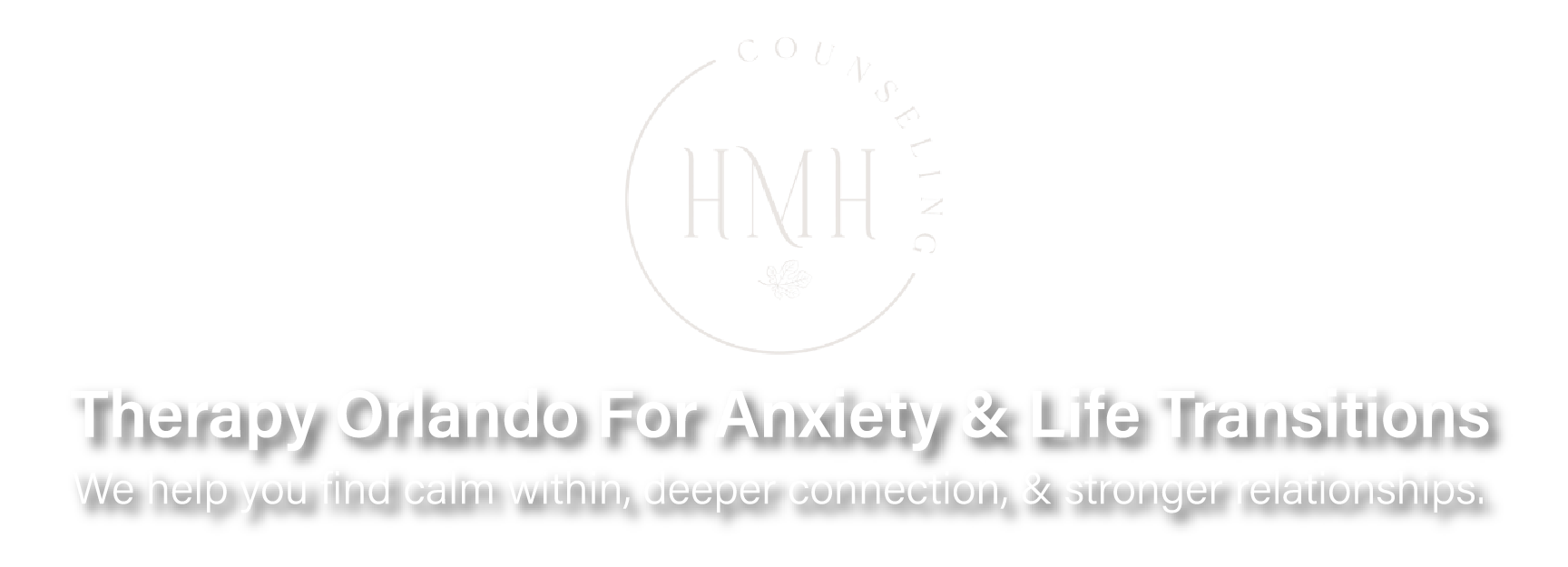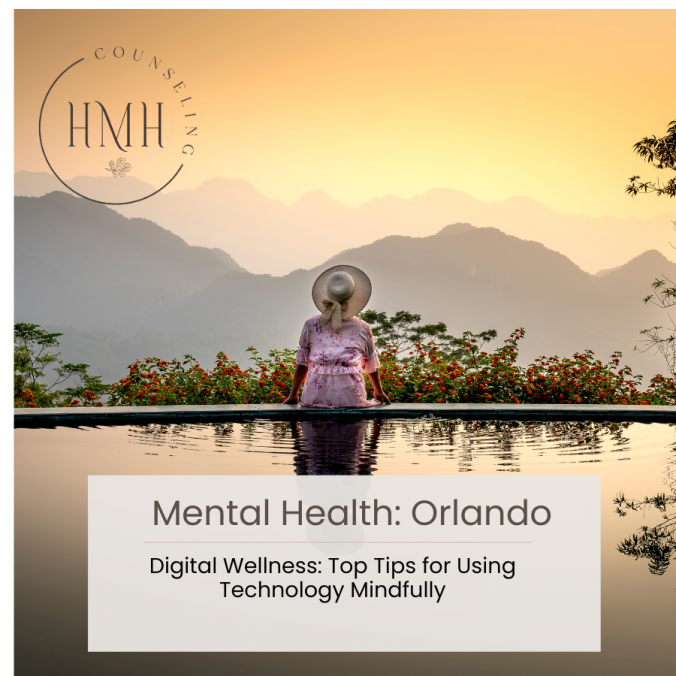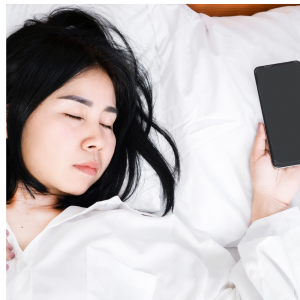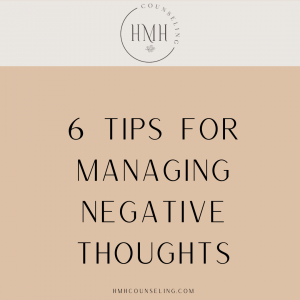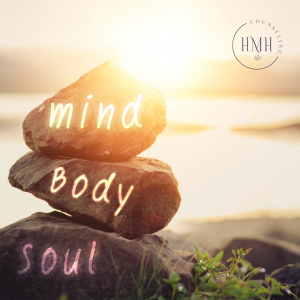March 11 • Written by: Jennifer Sierra, LMHC
The Effect of Technology on Mental Health
Technology has wedged itself into almost every part of our daily lives, and it’s hard to imagine getting through the day without it. Think about it – the first thing many of us do in the morning is reach out to silence our buzzing phones. And last thing at night? We’re often caught up in endless scrolling through social media. We’re in a constant loop of notifications, alerts, and digital stimulation.
Sure, technology makes life easier and keeps us connected in ways we could only dream of before. But let’s face it; being plugged in all the time has its downsides. You’ve probably felt it too— that nagging stress, the feeling of being alone even though you’re always texting friends, the nights when you just can’t get to sleep because your brain won’t shut off, or those days you feel down for no good reason.
The good news is that we have the power to take control. We don’t have to let our tech own us. By changing how we think about our devices, we can transform our relationship with tech into one that improves our lives instead of dragging us down. This article will explore mindful ways to interact with technology. Because, let’s face it, it’s all about using it in ways that make our lives better, not drained or stressed. Let’s get back in control and make our tech work for us, in a way that boosts our mental health, not the other way around. According to a study by Twenge and Campbell (2018), these feelings are not just in our heads. The researchers found that excessive tech use is indeed linked to increased stress, anxiety, depression, loneliness, and poor sleep quality.
 At HMH Counseling, led by Jennifer Sierra, LMHC, we understand the importance of balancing our relationship with technology. We help people with anxiety learn coping skills while they find balance. One of the things we explore is the impact of technology use on Anxiety and overall wellness. That’s why we’ve created this comprehensive guide to help others to achieve digital wellness. Learn effective strategies to take control of your technology use, boost your mental health, and enhance productivity. As a trusted local source for mental health counseling right here in Orlando, committed to empowering our community by nurturing healthier digital habits.
At HMH Counseling, led by Jennifer Sierra, LMHC, we understand the importance of balancing our relationship with technology. We help people with anxiety learn coping skills while they find balance. One of the things we explore is the impact of technology use on Anxiety and overall wellness. That’s why we’ve created this comprehensive guide to help others to achieve digital wellness. Learn effective strategies to take control of your technology use, boost your mental health, and enhance productivity. As a trusted local source for mental health counseling right here in Orlando, committed to empowering our community by nurturing healthier digital habits.
How Much We Use Technology
Tech is everywhere in our lives. We wake up and check our phones. We use computers all day for school or work. We relax by watching TV and browsing social media. Even when we go to bed, we typically keep our phones close.
Surveys show that the average person in the U.S. spends 11 hours a day on different devices like smartphones and TVs (Nielsen, 2018). A typical smartphone user will check their phone about 80 times a day, spending a total of over 4 hours (Asurion, 2017).
These days, we do almost everything online, from chatting with friends to shopping. While our devices make life easier and keep us connected, they can also take up all our attention. As tech becomes an even bigger part of our lives, it’s important to ensure we find a healthy balance by changing our relationship with technology.
The Downside of Too Much Tech
Overdoing it with technology isn’t just a bad habit—it can seriously affect your health, both in mind and body. Studies show that spending prolonged periods using screens contributes to increased risks for obesity, posture problems, headaches, eye strain, and sleep disturbances. When we’re sitting around using tech, we’re not moving, and that lack of activity can lead to weight gain, weaker muscles, heart disease, and other serious issues.
But it’s not just about the physical. Our mental health takes a hit, too, especially with social media. Ever felt down after scrolling through everyone else’s “perfect” moments? You’re not alone. Constantly comparing ourselves to the highlight reels we see online can leave us feeling not good enough, anxious, depressed, and isolated.
And here’s the thing about tech—it’s designed to suck us in, making it super easy to overdo it and even develop addictive habits. Ever felt restless or irritable when you’re not on your phone or gaming? Lost interest in stuff you used to enjoy? Tried to cut down on screen time and failed? These are signs of tech addiction.
Balancing our tech use is crucial. It’s about knowing when our gadgets are actually improving our lives versus when they’re just robbing us of real, valuable time. Being mindful and exercising self-control is the way to go.
Taking Control
The key to a healthy relationship with technology is feeling in control of your use instead of feeling controlled by your devices. Here are some strategies to avoid tech addiction and finding balance in a digital age:
- Turn off notifications so you choose when to check apps, not when you’re interrupted. This prevents distractions and lets you focus.
- Delete distracting apps to avoid mindless scrolling. Only keep apps that serve your goals.
- Schedule specific times to be offline. For example, no phones during dinner or after 9pm.
- Use apps to block sites and apps that derail your focus during work times.
- Start a stopwatch when you use your phone. Aim for 5-10 minutes max per session.
- Leave your phone across the room when working. Checking only on breaks prevents constant disruptions.
- Charge your phone outside your bedroom overnight. This prevents using it before bed or as an alarm clock.
- Buy an old-school alarm clock and read paper books before bed. This returns to pre-tech bedtime routines.
The key is feeling intentional about when and how you use technology instead of letting it run your schedule. Small changes make a big difference in controlling your usage rather than being controlled by your devices.
Recognizing the Red Flags of Tech Overuse
In a world where tech is our go-to for fun, staying in touch, or just tuning out, it’s sometimes a fine line between use and overuse. Are you in charge of your screen time, or is it pulling the strings? Watch out for these tell-tale signs that indicate your tech habits might be taking the wheel:
- You compulsively check your phone or apps throughout the day, even when you know no one is trying to reach you. The urge to scroll and tap is too strong to ignore.
- You lose track of time online, finding yourself down an endless rabbit hole of videos, articles, or social media. Before you know it, hours have gone by.
- You neglect face-to-face interaction and prefer to communicate digitally instead. Texting starts taking the place of in-person or phone conversations.
- You use technology as a way to avoid challenging tasks or social situations that make you uncomfortable.
- Attempts to limit your technology use leave you feeling anxious, irritable or disconnected. You can’t imagine getting through your day without constant access.
- Your device use disrupts your sleep schedule, either from staying up too late scrolling or becoming too reliant on screens to fall asleep.
- You feel frequent FOMO (fear of missing out) when you try to take a break from technology and social media. This causes you to compulsively check in just to make sure you don’t lose touch.
The more of these symptoms you experience, the more control technology has over you. Self-awareness is key. Be vigilant of when your use stops being a choice and starts being a compulsion.
Mindful Usage Tips 
In our digital age, maintaining mental and emotional well-being means interacting with technology mindfully. Here is a list of mindfulness techniques for limiting screentime:
- Take breaks throughout the day. Set reminders to give yourself a short break from screens every 20-30 minutes. Even a 1–2-minute breather helps reset your focus.
- Set time limits. Use built-in time limit settings or apps to constrain the time you spend on distracting websites and apps. Start with 30-60 minutes at a time.
- Turn off notifications. The constant dings and pings of notifications keep us in a state of distraction. Mute or turn off notifications to avoid interruptions.
- Meditate before use. Take a few minutes to meditate and clear your mind before sitting down in front of a screen. This centers you before engaging.
- Focus on single tasks. Avoid multitasking, as shifting between tasks reduces your concentration. Stick to one activity at a time.
Establishing these mindful habits takes patience, but making small changes can profoundly improve your relationship with technology.
Digital Detox: Reset Your Relationship with Technology

A digital detox involves taking an extended break from technology to reset your habits and regain balance in your life. With so many digital distractions around us, it’s easy to lose sight of how much time we actually spend on our devices each day. A digital detox allows you to take back control and be more intentional with how you engage with technology.
How to do a successful digital detox:
- Start with a short detox, like a 24-hour period on the weekend, to see how you feel without constant connectivity. Gradually increase the length as you adjust.
- Inform friends and family you’ll be offline, so they understand if you don’t respond right away. Let work know as well.
- Remove social media apps and turn off notifications on your devices so you aren’t tempted to check in.
- Find an accountability partner who can do the detox with you. Check in to discuss challenges and progress.
- Plan alternate activities to fill your time, like mindfulness, reading, exercising, spending time in nature, or engaging in hobbies.
- When the detox period ends, be mindful about which apps you reintroduce and when. Consider better boundaries around usage.
A digital detox can feel challenging at first, but ultimately provides mental clarity, freedom from distractions, and renewed creativity. It’s an excellent way to reset your habits and get your technology use back under control.
Mindful Reintegration

After completing a digital detox, the next step is to slowly and mindfully reintroduce technology use into your life. It’s important not to immediately go back to old habits of constant connectivity and compulsive social media scrolling. Instead, maintain some of the mindful habits you developed during your detox. For example:
- Only turn on the notifications you find absolutely essential. Mute or turn off the rest. This prevents constant disruptions and allows you to focus.
- Take regular breaks from your devices throughout the day. Maybe set a timer to remind yourself to stand up and step away for 5-10 minutes each hour.
- Establish designated tech-free times, like during meals, an hour before bed, or time spent with family and friends.
- When you do use your phone or computer, try to be more intentional about it. Don’t just mindlessly open apps out of habit. Only use technology with a purpose in that moment.
The goal is to be in control of your technology use, rather than letting it control you. By easing back into it thoughtfully after a reset, you can form new, healthier digital habits. Maintain boundaries and stay aware of when tech use starts creeping up again. Check in regularly with yourself to prevent falling back into compulsive behaviors.
Get the Support You Need

Finding balance in your technology use can be challenging. If you’re navigating this journey and seeking counseling services for technology overuse, we’re here to help. At HMH Counseling, we’re committed to guiding you towards a healthier relationship with technology and improving productivity through mindful tech use. Our approach is tailored to meet your unique needs, helping you to embrace a digital lifestyle that enhances rather than detracts from your well-being. Reach out if you’re ready for positive changes—let’s navigate this path together.
Find Balance with HMH Counseling
Sources:
Twenge, J. M., & Campbell, W. K. (2018). Associations between screen time and lower psychological well-being among children and adolescents: Evidence from a population-based study. Psychology of Popular Media Culture, 7(4), 207-217.
Nielsen. (2018). U.S. adults now spend nearly half a day interacting with media.
Asurion. (2017). Americans check their phones 80 times a day: Study.
